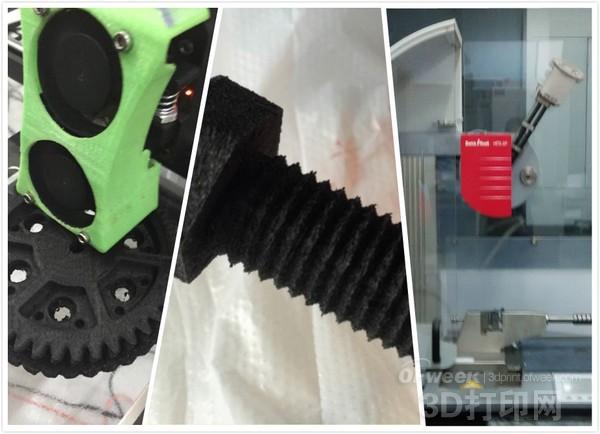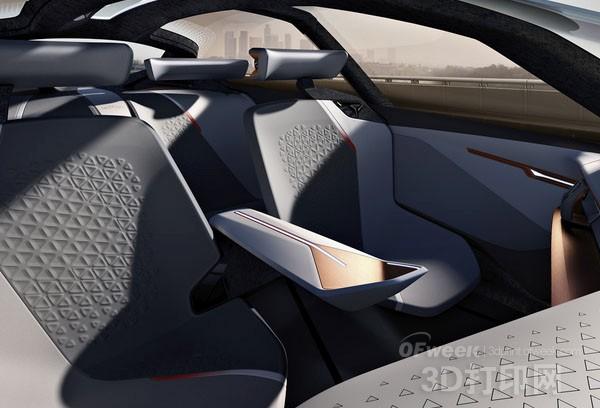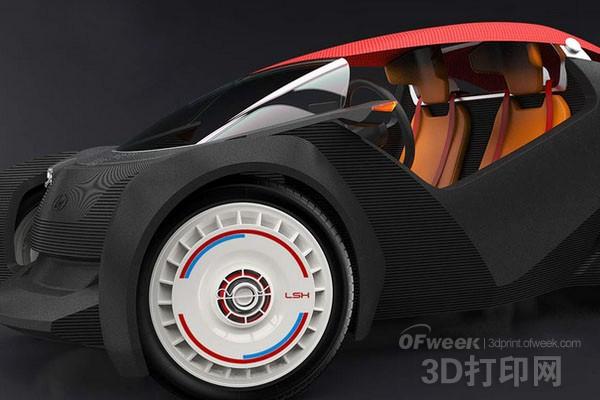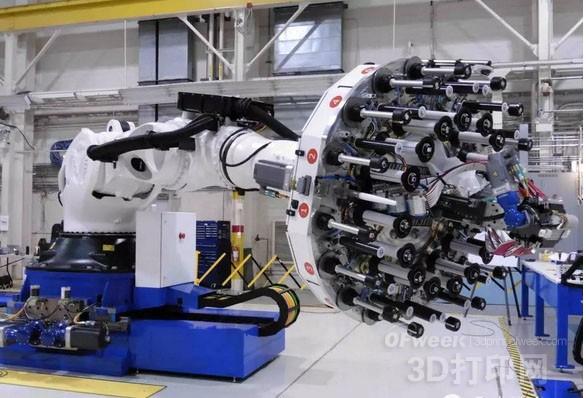For the manufacturing industry, carbon fiber composites are an important area. Carbon fiber can provide strength comparable to metal, but its weight is very light. Carbon fiber is in industries that need to consider weight and strength ratio, such as aerospace, automotive, rail transit, etc. The industry has a wide range of application prospects. The traditional process of manufacturing carbon fiber is very complicated and requires a lot of manpower, but the increasingly advanced 3D printing has brought new hope to carbon fiber manufacturing. A group of 3D printing companies have begun to focus on carbon fiber composite materials, trying to create carbon fiber with 3D printing technology. Composite products, these successful attempts to promote the use of carbon fiber composites will be more convenient, while greatly reducing manual investment.

Raw materials: mixing of carbon fiber composites and hot melt plastics
Printing carbon fiber by FDM melt extrusion requires printing carbon fiber composites together with hot melt plastics. For example, using hot melt plastics such as PETG, PETG itself has good ductility and it can withstand more High CF load while maintaining a certain degree of ductility and impact resistance. It adheres well to a variety of construction platforms and also has excellent layer adhesion, while the addition of carbon fiber increases its rigidity and dimensional stability. The Dutch colorFabb XT-CF20 printing material contains Eastman Chemical's PETG material and 20% carbon fiber material. 3DXTECH is also made of Eastman PETG material combined with high modulus carbon fiber. Another company, Proto-pasta's carbon fiber reinforced PLA, is a synthetic of corn starch-derived derived plastics and carbon fiber composites.

ArevoLabs: Scalable Robot-Based Additive Manufacturing RAM Devices
ArevoLabs from Silicon Valley USA offers not only carbon fiber industrial grade 3D printers , but also new carbon fiber and carbon nanotube (CNT) enhanced high performance materials for 3D printing, which are also available on the market using its proprietary 3D printing technology and proprietary software algorithms. Existing filament melt 3D printers produce state-of-the-art super-polymer parts. Of particular importance is the introduction of a scalable robot-based additive manufacturing RAM device for printing carbon fiber composites. Currently, the device's software is specifically for the ABBIRB120 six-axis robot, but the scalable software can also support larger ABB robot models and sizes. Depending on the size of the robot, the print volume can range from 1000 cubic millimeters to 8 cubic meters.
ImpossibleObjects: CBAM process
ImpossibleObjects' CBAM process principle is that when a CAD file is cut into separate bitmap layers, the printer prints the thermoplastic droplets onto the base layer of the carbon fiber composite according to the bitmap model, and then those in the base material are not stuck by the droplets. The powder is blown away, leaving only the binder and composite formed from the bitmap model. Using this technology, the printed parts are 2 to 10 times stronger than the parts printed with 3D using traditional thermoplastic materials. The printable size of the device is 305mm x 406mm and is still in the test verification phase. It is scheduled to be officially launched in 2017.

EnvisionTEC: Industrial Grade Composite 3D Printer
In 2016, EnvisionTEC launched SLCOM1 industrial grade composite 3D printer for processing carbon fiber fabrics or other varieties of reinforced aramid fabrics. Nylon 6, nylon 11, nylon 12, polyetheretherketone, polyetherketone can be used. Ketones, polycarbonates and many other materials are enhanced. Customized for high quality 3D printed parts such as aerospace, automotive, sporting goods and medical. The tailor-made products fully reflect the extraordinary toughness, weather resistance, shock absorption, high wear resistance and high strength-to-weight ratio of carbon fiber.
Electroimpact: AFP ultra-thin carbon fiber layer layup technology
Electroimpact's AFP ultra-thin carbon fiber layering technology uses carbon fiber as the raw material, the printing equipment is very fine, but the price is very expensive. The equipment has a robot arm of 6.4 meters (21 feet) and 16 heads similar. The old-fashioned sewing machine is equipped with a winding device. The whole arm is mounted on a 12-meter-long track, which can be quickly printed around the model movement, which greatly saves production time and cost of parts and prototypes.

If the 3D printing industry wants to gain more market share in the $100 billion manufacturing market, 3D printing technology needs to be applied in both process technology and materials. The various advantages of carbon fiber reflect the possibility that this goal becomes a reality. To be sure, to compete with traditional manufacturing, composite materials are bound to be one of the driving forces behind 3D printing becoming mainstream technology. However, this is just a unilateral redemption of 3D printing. For carbon fiber composites, 3D printing is just an aid to improve its own molding effect. There are also several carbon fiber composite manufacturers in China who are trying to make 3D printing and carbon fiber. The molding of composite materials is combined, but the progress is not satisfactory.
Wuxi Weisheng New Material Technology Co., Ltd., which has been engaged in the manufacture of carbon fiber composite materials for more than ten years, its products are supplied to many industries such as military industry, automobile, high-speed rail, medical care, etc. In order to seek a better molding method, the company has tried many times with 3D. The printer cooperated, and the results of the experiment, the head of the R&D department summed up two points: "First of all, our domestic 3D printing technology is not perfect enough, and there is a considerable gap with the technology level of foreign first-class 3D printing developers; Secondly, there are certain requirements in the application of carbon fiber composite products. For example, the high-speed rail support members we produce are not only required in terms of strength, but also must meet the safety performance standards for high-speed operation of high-speed rail in other aspects such as fire retardant and flame retardant. The current 3D printing technology cannot be achieved in terms of composite material performance. In terms of printing cost, mass production cannot be performed at a large scale, so it is not practical at present." However, the person in charge also said: "3D printing has provided us with a new way of forming, which is not necessarily in the finished product, and may be more meaningful in 3D modeling ."
It is true that regardless of the intersection and application depth at this time, when carbon fiber 邂逅 3D printing, 3D printing opens up a new way for its own deep industrial manufacturing, at the same time, it also provides a new for the manufacture of carbon fiber composites. direction.
Trash Cans Recycling Bins can be widely used in office or at home, to keep the space clean. We are the professional manufacturer for metal and plastic products: Pedal Trash Bins, Hand Push Trash Bins, sensor Trash Bins. Some of our products are CE/ SGS certified. You can contact us for OEM.
sensor garbage bin,intelligent garbage bin,touchless garbage can,Smokeless Bbq Grill Charcoal Picnic Grill
TAISHAN YUEXIN INDUSTRIAL GROUP LIMITED , https://www.gdmetalplasticproducts.com